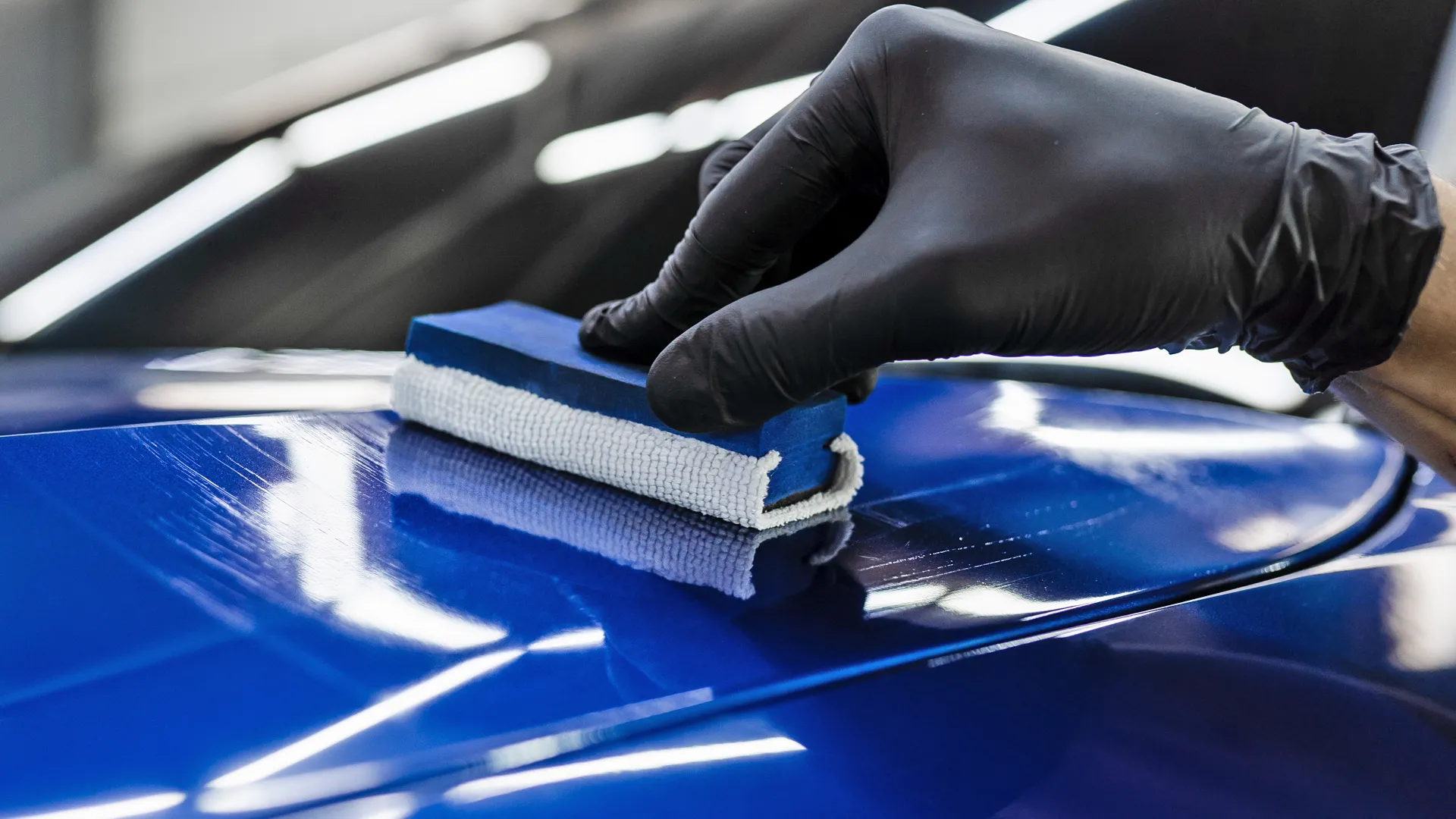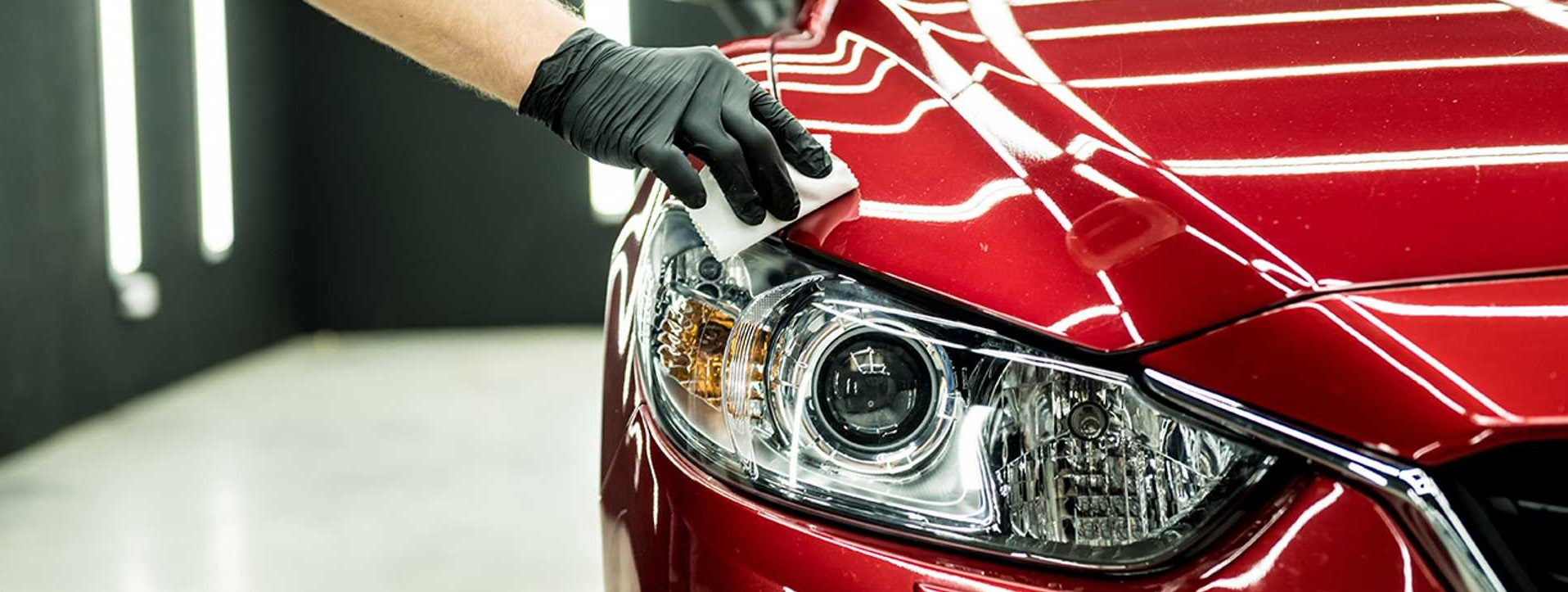A complete guide to selecting the best Ceramic Coating Newark service
Wiki Article
Checking out the Science Behind Car Ceramic Coating and Its Safety Features
The scientific research of car ceramic coating offers an interesting research in sophisticated automobile protection. Composed mainly of silicon dioxide and polymers, these coverings create a robust bond with vehicle paint. This interaction boosts sturdiness against ecological risks while providing hydrophobic advantages. Nevertheless, the complexities of just how these finishes work and their long-lasting advantages continue to be less understood. Unpacking these details exposes why ceramic coatings are ending up being a preferred choice for car careWhat Is Ceramic Coating?
Ceramic coating is a liquid polymer that chemically bonds to the surface of a vehicle's paint. This innovative protective layer boosts resilience and supplies exceptional resistance to ecological elements. Unlike traditional wax or sealants, which supply temporary protection, ceramic coverings develop a long-lasting shield that can stand up to severe conditions such as UV rays, acidic impurities, and severe weather condition. When applied properly, the coating creates a hydrophobic surface, triggering water to grain and slide off, which assists in keeping the automobile's sanitation. Furthermore, it provides boosted gloss and depth to the paint, making the lorry show up more sleek and lively. The application process usually entails detailed surface preparation, including cleaning and sprucing up, to assure peak bonding. Consequently, ceramic coverings are becoming increasingly prominent among car enthusiasts and those seeking to secure their investments, assuring to keep the vehicle's aesthetic appeal while lowering the regularity of upkeep.The Make-up of Ceramic Coatings
The detailed formula of ceramic finishes mainly contains silicon dioxide (SiO2), which is obtained from all-natural resources like quartz and sand. This vital element supplies the structure for the coating's resilience and protective high qualities. Along with SiO2, ceramic finishes frequently consist of different polymers and ingredients that boost bond, versatility, and resistance to environmental aspects. These compounds function synergistically to produce a robust obstacle against impurities such as dust, chemicals, and UV rays.Furthermore, some solutions integrate titanium dioxide (TiO2) or other nanomaterials, which can boost the coating's hydrophobic properties, causing better water repellency. The accurate make-up can differ significantly amongst suppliers, impacting performance and longevity. Inevitably, the combination of these elements finishes in a protective layer that not just enhances the visual charm of lorries but likewise offers to extend their life expectancy by protecting the surface area from prospective damages.Exactly How Ceramic Coatings Job
Understanding exactly how ceramic coatings function entails discovering their chemical composition, which contributes to their safety qualities. The application process is essential for accomplishing optimal results, while durability and resilience variables figure out the coating's effectiveness gradually. Together, these components highlight the benefits and performance of ceramic coverings for car defense.Chemical Make-up Explained
While lots of car owners seek lasting security for their cars, the chemical structure of ceramic finishes plays a vital duty in their performance. These layers mainly contain silicon dioxide (SiO2), which is stemmed from all-natural minerals. This compound creates a strong bond with the lorry's paint, developing a sturdy, protective layer. In addition, numerous ceramic finishings have titanium dioxide (TiO2), enhancing their hydrophobic buildings and resistance to UV rays. The visibility of polysiloxanes can better improve versatility and sturdiness. With each other, these components add to the coating's ability to ward off water, dirt, and impurities, while additionally offering a high-gloss surface. Recognizing this chemical foundation aids car owners appreciate the durable security provided by ceramic layers.Application Process Overview
Using ceramic finishings involves a careful process that ensures suitable bonding and protection for the vehicle's surface. Initially, comprehensive cleaning and decontamination of the car's outside are performed to get rid of dirt, gunk, and previous waxes. This step validates that the surface area is without pollutants that can prevent bond. Following this, the paint is usually brightened to enhance clearness and get rid of any imperfections. Once prepared, the ceramic coating is applied in small sections using an applicator pad, permitting for uniform protection. The coating is then entrusted to cure, creating a solid chemical bond with the surface area. Correct treating times and problems are critical, as they confirm the coating attains its maximum effectiveness and safety high qualities.Long Life and Longevity Aspects
Ceramic coatings are created to supply lasting defense via their sophisticated chemical composition, which creates a durable barrier versus environmental impurities. The toughness of these coverings is influenced by aspects such as the density of the application, the high quality of the product, and the problems under which the vehicle is revealed. Premium ceramic finishings can last numerous years, resisting scrapes, UV rays, and chemical discolorations. Correct maintenance, consisting of normal washing and regular reapplication, can additionally improve long life. Furthermore, ecological variables like climate and direct exposure to contaminants can influence the life-span of the coating. Generally, when used and maintained properly, ceramic finishes provide remarkable longevity, making them a preferred option for car lovers seeking to protect their automobile's look.Hydrophobic Qualities and Water Repellency
Hydrophobic residential properties are a characteristic of top quality car ceramic layers, significantly boosting the lorry's surface performance. These finishings produce a molecular bond with the car's paint, leading to a surface that repels water efficiently. When water enters into call with a ceramic-coated surface area, it beads up and rolls off, decreasing the quantity of liquid that remains on the paint. This behavior not only contributes to an aesthetically pleasing appearance but likewise lowers the build-up of impurities such as dirt, gunk, and roadway salts.The boosted water repellency causes simpler cleansing and maintenance, as less initiative is Look At This needed to remove unwanted materials. In addition, the hydrophobic nature of ceramic finishings helps in stopping water areas, which can mar the surface of uncoated surfaces. On the whole, the incorporation of hydrophobic properties in ceramic coatings plays a vital role in preserving the lorry's immaculate appearance while simplifying upkeep.Security Against Scratches and UV Damages
Car ceramic layers supply significant protection versus scrapes and UV damage. The scrape resistance device develops a durable layer that absorbs impacts, while the UV protecting benefits help preserve the automobile's paint stability with time. Together, these functions add to a longer-lasting and visually attractive coating.Scratch Resistance Mechanism
Making use of advanced technology, ceramic coverings offer a durable guard against scrapes and UV damage, enhancing the long life and appearance of vehicle surfaces. The scratch resistance device of these coatings is connected to their special molecular structure, which develops a durable bond with the automobile's paint. This bond creates a hard, protective layer that can soak up effects and stand up to abrasions. Furthermore, the smooth surface area of the coating decreases rubbing, making it challenging for impurities to adhere and cause scrapes. The chemical structure of ceramic finishings typically consists of nanoparticles that enhance the safety layer, further enhancing Continue its strength. Consequently, lorries treated with ceramic coverings exhibit significantly boosted scratch resistance contrasted to traditional wax or sealants, guaranteeing an excellent coating in time.UV Protecting Perks
The protective qualities of ceramic layers prolong beyond scratch resistance to include significant UV shielding benefits. These coverings create a durable obstacle that shows damaging ultraviolet rays, safeguarding the car's paint and underlying materials. Long term direct exposure to UV radiation can cause fading, oxidation, and degeneration of the paint surface. By including ceramic finishings, car proprietors can properly alleviate these dangers, preserving the aesthetic appeal and honesty of their cars and trucks. Additionally, the UV obstructing homes add to boosted durability, lowering the frequency of repainting and maintenance. Inevitably, the integration of ceramic finishes offers a comprehensive remedy for securing vehicles from the harmful impacts of sunlight exposure, making sure a sustained, lively appearance in time.The Long life and Maintenance of Ceramic Coatings

Often Asked Concerns
Can Ceramic Coating Be Applied to Any Sort Of Lorry?
Ceramic coating can be put on different kinds of automobiles, consisting of vehicles, vehicles, and motorbikes. Nevertheless, surface area preparation and compatibility with certain products are important for optimal bond and efficiency of the coating.Just How Much Does Ceramic Coating Usually Expense?
Ceramic coating generally sets you back in between $500 and $2,000, depending upon elements such as vehicle dimension, coating top quality, and expert application. The investment can give long-lasting security and enhance the vehicle's look gradually.
Is Professional Application Essential for Ideal Results?
The requirement of professional application typically relies on desired results. Professionals typically assure correct surface area preparation and application strategies, leading to ideal bonding and long life of the coating, which might be testing for inexperienced people to accomplish.Can Ceramic Coatings Be Gotten Rid Of or Fixed?
Ceramic finishes can be gotten rid of or repaired, though the procedure might require specific solvents or strategies - Ceramic Coating Newark. Appropriate elimination is important to prevent damages to the underlying surface, highlighting the importance of expert aid for optimal outcomesJust How Does Porcelain Coating Contrast to Typical Wax?
The comparison in between ceramic coating and traditional wax discloses that ceramic finishes provide superior longevity, boosted protection against ecological impurities, and longer-lasting luster, while wax requires a lot more frequent application and offers less general resistance to damages.Report this wiki page